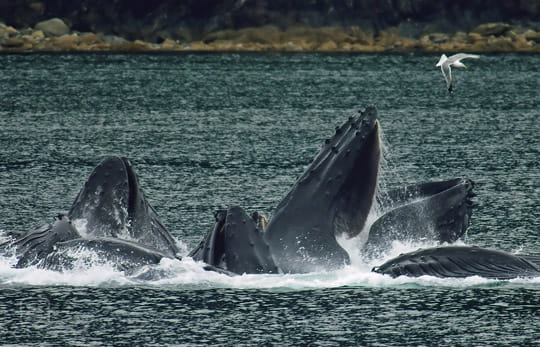A group of whales is called a pod

A Group of Whales is Called a Pod

Whales are magnificent creatures that have captured the fascination of humans for centuries. These majestic marine mammals are known for their massive size, intelligence, and impressive communication skills. One fascinating fact about whales is that they travel and hunt together in social groups known as pods.
What is a Pod? A pod is a group of whales that share a strong social bond and travel, hunt, and migrate together. Pods can range in size from just a few individuals to several dozen, and each pod typically consists of whales of the same species. Within a pod, there is a sense of unity and cooperation, as the members work together to navigate the vast oceans and find food.
Why Do Whales Form Pods? One of the primary reasons whales form pods is for protection and security. Traveling in a group helps to safeguard individual whales from potential threats such as predators or unfavorable environmental conditions. By staying close together, whales can deter or defend against any potential danger that could harm an individual or their young.
Pod Dynamics Pods are not formed randomly; they are structured and organized. They can either be matrilineal or consist of unrelated individuals that form temporary associations. Matrilineal pods are comprised of females and their offspring, led by a matriarch. This type of pod allows for a strong bond between family members, providing a nurturing and protective environment for the calves.
On the other hand, temporary associations are formed when unrelated individuals come together for various reasons, such as mating or foraging. These groups might disband once their objectives are achieved. The dynamics within these pods are complex and can include hierarchical relationships, communication through vocalizations, and coordinated hunting techniques.
Cooperation and Communication Communication plays a crucial role within a whale pod. Whales communicate with each other through a variety of methods, including vocalizations, body language, and specific behaviors. These acoustic signals can travel vast distances underwater. For example, orca whales are known for their distinct songs and calls, which serve to coordinate actions within the pod and convey information.
This strong sense of cooperation and communication allows whales to effectively hunt for food. Pods work together to surround a school of fish or other prey, using strategic maneuvers to encircle their target. This cooperative hunting technique is called “bubble-net feeding” and is often used by humpback whales. By blowing a ring of bubbles around the fish, the prey is trapped, making it easier for the whales to feed.
Conclusion In conclusion, a group of whales is called a pod. These social units allow whales to interact, communicate, and cooperate effectively. The formation of pods enhances the chances of survival, protecting individuals from potential threats and ensuring successful breeding opportunities. The complex social dynamics and communication methods within a whale pod add to the remarkable nature of these fascinating marine mammals.
Related Posts
Quick Links
Legal Stuff


